lots of broken shards of delftware dug-up in English garden and possibly early 18th Century
I own a very old Farm house in England. The main frontage of my house was built in 1718, although the north and south wings of the property are much older possibly 17th or 16th Century. I think the 1718 portion of the house was built following a fire in the south wing and this is consistent with some fire damage we have found when renovating the property.
Recently we have been digging in the rear garden and have uncovered an area of burnt timber, roof tiles and stonework. It appears to be an area where all the burnt rubble from the house was dumped after the fire was put out and then simply covered over with soil. Amongst all the burnt rubble and timber we have also found the remnants of lots of Delft pottery and I wondered if you would be able to assist me in dating this pottery. I have included a few photographs of lots of different types of broken pottery and can provide detailed photos if you need to see something in close-up. Would you be able to date any of this pottery shown in the photo? Any help you can offer would be most useful.
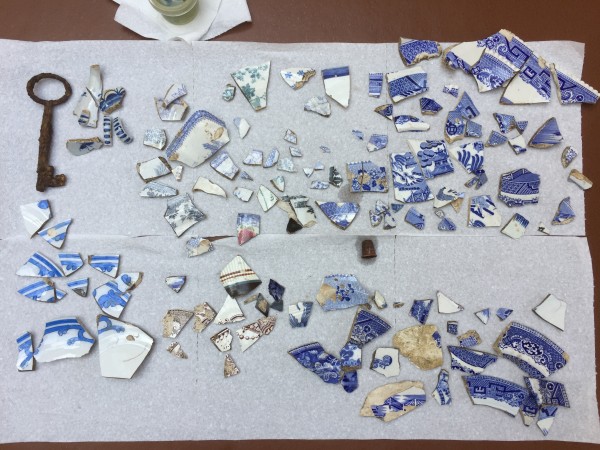
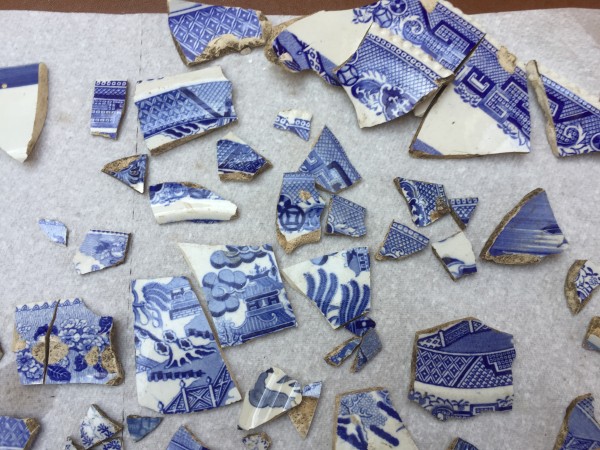
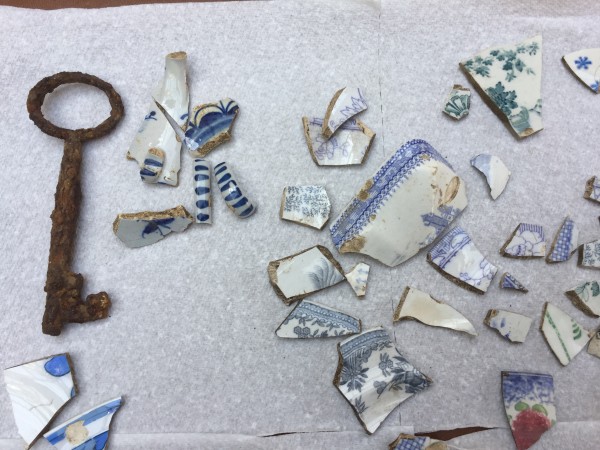
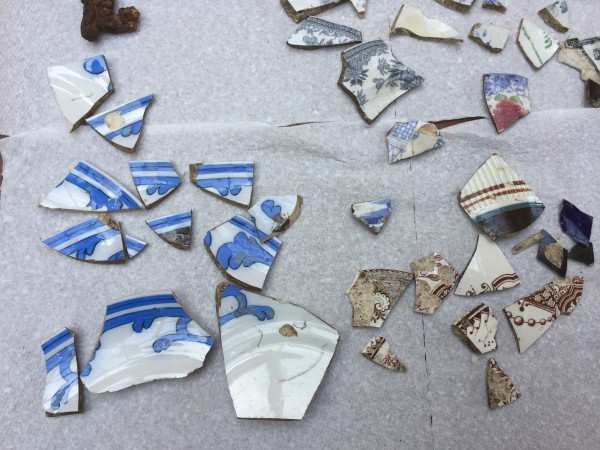
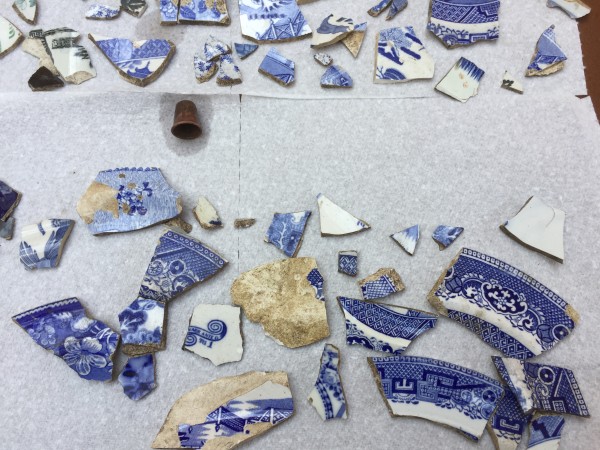












Reacties 4
Verdict:
Analysis:
Dear John,
I think it is always wonderful to see so many shards. It's great to have so much history surrounding your house. Most of these shards are not considered delftware, but pottery from manufacturers from mostly Staffordshire between 1781-1900s. The pottery from those factories was printed and not handpainted. Next to that the ceramic and glaze were of different materials. The only pottery that can be recognized as delftware are the shards next to the key. Even though it is hard to see in the picture, the colour and painting refer to English delftware. Ceramics with a tin glaze, like in Delft, were made in for example London and Bristol. I think the shard can be recognized as pieces from a butterdish with a lid. You can find a Dutch delftware example in the collection of the Rijksmuseum and Museum Arnhem.
Hi Suzanne,
thank you for your reply. Everything makes much more sense now, especially since your colleague Vincent linked me to the CC on the video. Without the English subtitles I had assumed that a similar plate in the video was Delftware. I fully understand now. Do you have a date for the English plate in the decoration video?
Thanks in Advance
In reply to Hi Suzanne, thank you for… by JohnDoh
Dear John,
I didn't see any video or message by Vincent. So I can't help you with your questions. Can you sent me the link?
Best wishes,
Suzanne
In reply to Dear John, I didn't see any… by Suzanne Klüver
Hi Suzanne,
Apologies, I meant the video on your website about decoarations/patterns. Here:
https://www.delftsaardewerk.nl/herkennen/decoratie
Most specifically the English plate shown at approximately 01:18 on the slider. Do you know if there is a date range for the production of this particular pattern. Is it exclusively late 19th Century or did this pattern appear much earlier than that?
Thanks in advance
JD
Add new comment
Only logged in users can post comments
Log in or register to post comments